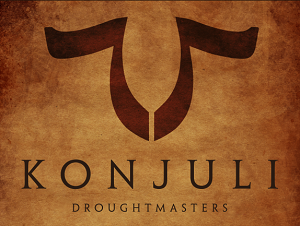BREEDPLAN
Taking the guesswork out of breeding
Obviously, we are great believers in traditional visual assessment of our cattle for traits such as structural soundness, temperament and so forth. However, we also recognised the merit that providing a level of scientific evaluation could bring to the improvement of our livestock, having the potential to take away some of the uncertainty.
So, in keeping with Konjuli’s “history of outstanding breeding” and, in an effort to improve the overall product we sell to our clients, Konjuli Droughtmasters became members of Droughtmaster BREEDPLAN, commencing in April 2019.

Huntly Rump
What is Breedplan?
BREEDPLAN is a modern genetic evaluation measurement system for beef cattle that has been implemented in Australia and New Zealand, as well as parts of Asia, the Americas and Europe. It offers the potential to accelerate genetic progress, tighten up breeding operations, improve productivity and increase prices for cattle sold for both breeding and slaughter.
Utilising, Best Linear Unbiased Prediction (BLUP) technology, which is the world’s most advanced genetic evaluation system, a range of important production traits (weight, carcass, fertility and so on) are recorded to produce an animal’s Estimated Breeding Value. Based upon these EBV’s we can make good estimates of an animals individual generic merit for various performance traits – knowing that half of these merits will be passed in to its progeny (the other half coming from the other parent).
Estimated Breeding Values (EBV’s)
An EBV is a value which expresses the difference (+ or -) between an individual animal and breed benchmark (or the herd) to which the animal is being compared. The “genetic base” can roughly be described as the historical genetic level of that breed, which for most breeds will have been set in the mid 1990’s.
Of course, all EBV’s are reported by the units in which they are measured – e.g. kilograms for weight, or mm for fat depth. So, for example, an EBV of +20 for 400 day weight means the animal is genetically superior by 20kg at 400 days compared with the genetic base of the cattle population.
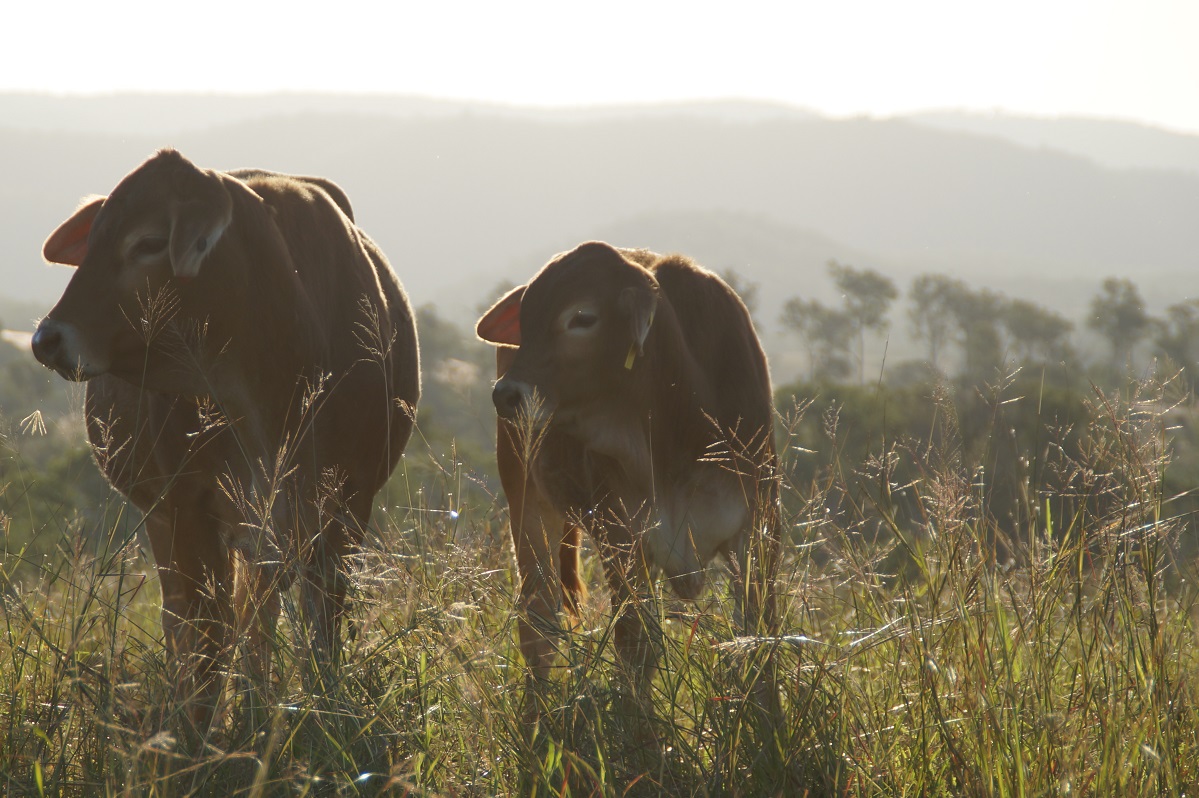
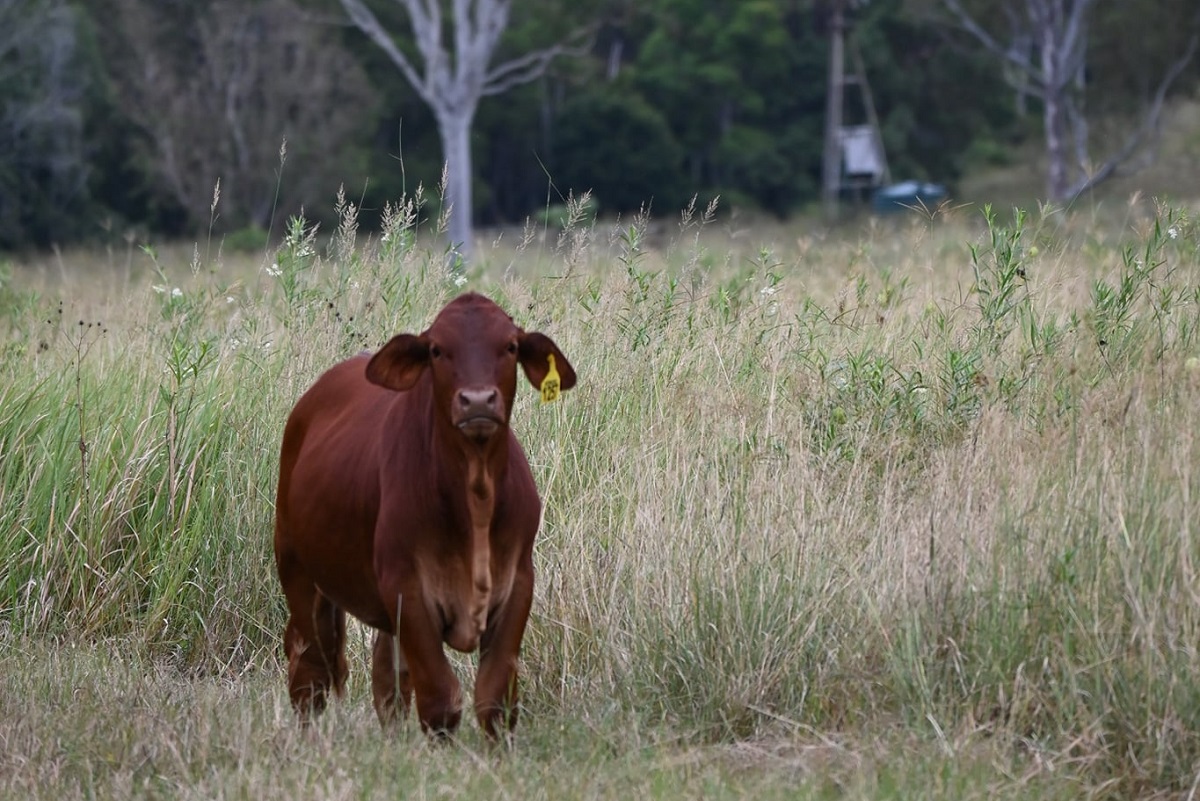
Investing in Breedplan at Konjuli
In Konjuli and Konjuli GJ’s case our EBV’s are based on the Droughtmaster Breedplan Australia benchmark.
We have been gathering data in the form of weights, flight times, scrotal size, mature weights, days to calving, gestation length on our cattle and their progeny, etc and submitting that data to Droughtmaster Breedplan.
This means that for Konjuli (and Konjuli GJ) we can identify genetic traits and performances that are important to our herd. As a result, we believe that we are more in touch with our herd and our sire to dam selection has become more of an educated decision rather than just gut feel. Importantly, it has also assisted in identifying animals that are not producing, which will ultimately improve our quality control.
What Droughtmaster EBV’s means for you
We are confident the Konjuli EBV’s will enable our customers to gain the desired performance in the traits they are looking for and this should help you to make a more informed decision on your next bull or registered female purchase to assist with your individual needs/markets.
Although EBVs provide an estimate of an animal’s genetic merit for a wide range of traits, they do not provide information for all the traits that must be considered during the selection of functional cattle.
Therefore, we recommend that EBVs (if available) should always be used in conjunction with visual assessment for other traits of importance (eg. structural soundness, temperament).
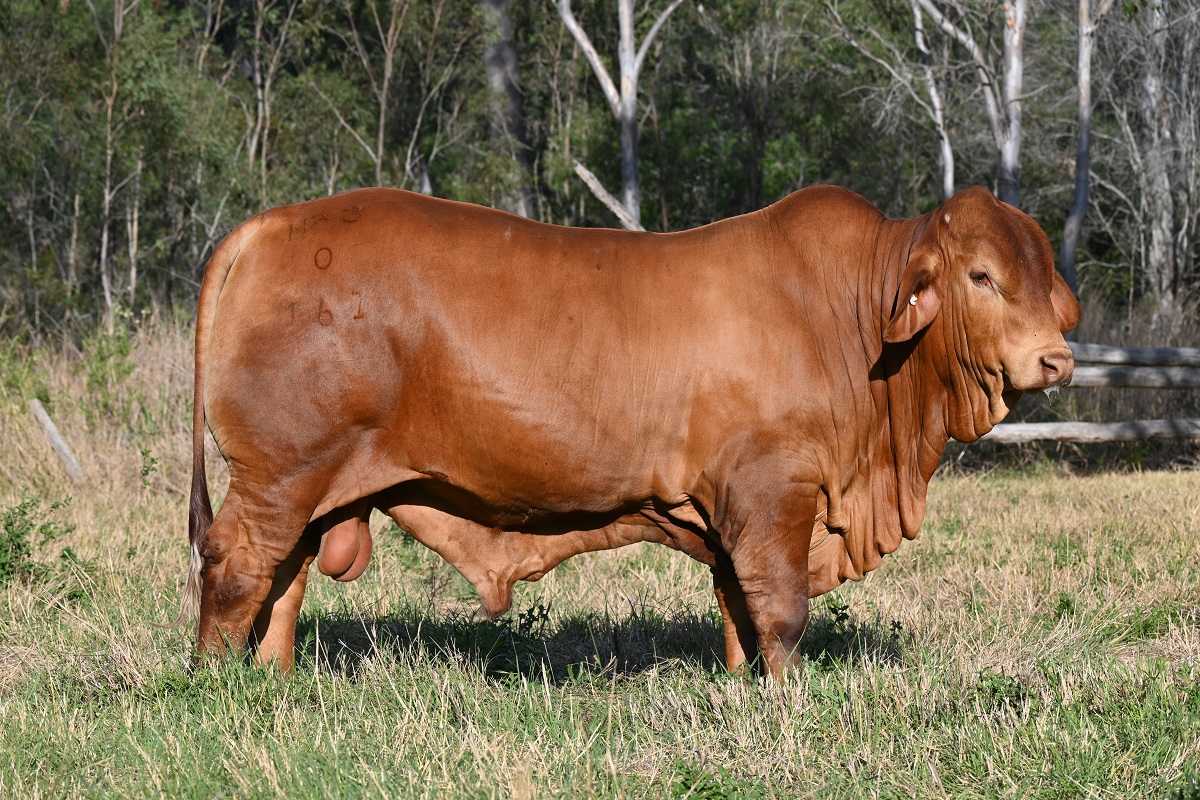
Konjuli Nikko
Konjuli Nikko | an example of Breedplan
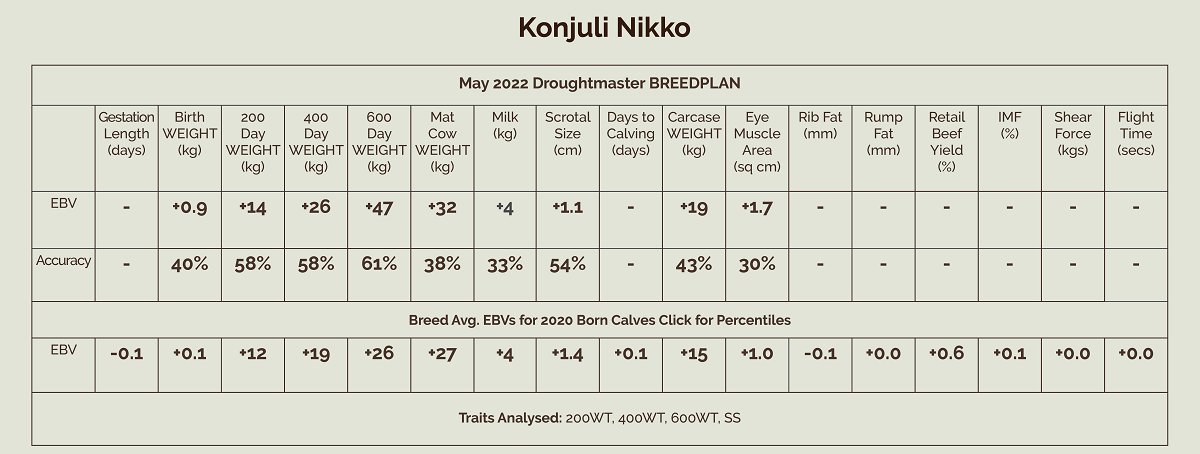
As you can see in the chart from the “Traits Analysed” Konjuli Nikko (pictured above) was weighed at 200, 400 and 600 days of age. His “SS” scrotal size was measured at the 400-day weigh in. Data was not gathered for the traits listed at the top of each column on the right-hand side of the chart.
The row of EBV scores along the bottom of the chart are the benchmark scores for the Droughtmaster breed, and it is these scores we use to compare Konjuli Nikko’s growth rate.
By comparing Konjuli Nikko’s EBV’s and the Droughtmaster benchmark EBV’s below, we can see that Konjuli Nikko was 5kg above the average at 200-days, 9kg at 400-days and, 18kg above the Droughtmaster average at 600-days.
As on average half of this difference will be passed on to the progeny of each sire, it can be estimated that calves from Konjuli Nikko would be on average 9 kg heavier at 600 days. Extending this to a single year’s drop of 50 calves, this difference equates to a potential production difference of 450 kg in live weight by the time the calves reach 600 days of age.
Directly under Konjuli Nikko’s EBV’s is a row of numbers representing “Accuracy” of the EBV’s (shown in percentages).
To provide breeders with a measure of the reliability of the estimate, BREEDPLAN produces an “accuracy” figure with each EBV. The “accuracy” provides a measure of the stability of the EBV and gives an indication of the amount of information that has been used in the calculation of that EBV..
The percentages for Konjuli Nikko are mostly between 50% and 75%, which are rated medium accuracy. This is simply because of the lack of data available on Nikko’s and his relatives owing to our recent introduction to Breedplan.
If you would like to learn more about Konjuli Droughtmasters Breedplan then please do not hesitate to contact Sean on 0427 740 994
contact
Sean 0427 740 994
Evonne 0417 905 488
ADDRESS
4856 Brooweena-Woolooga Rd
Woolooga QUEENSLAND 4570
